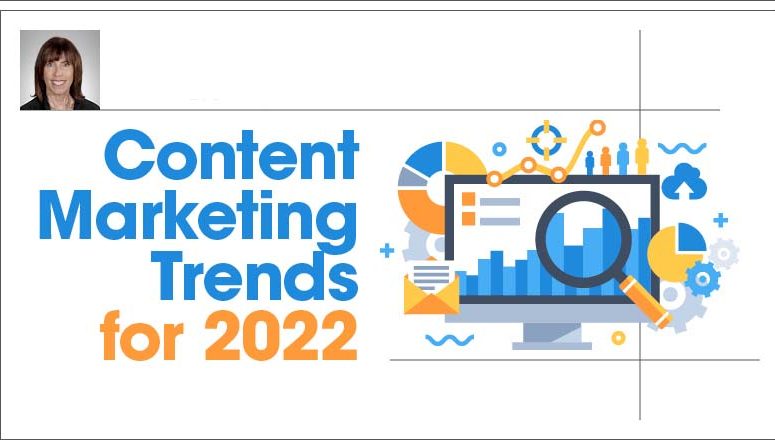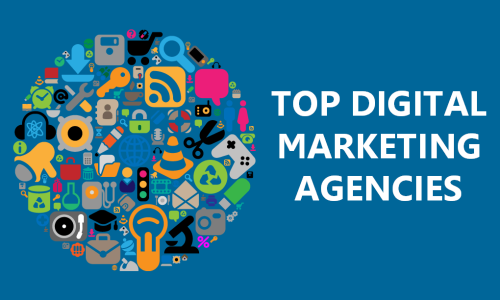
#1: Focus on a Better Content Experience
It’s no secret that customer experience is paramount to successful digital marketing strategies today.
It’s also no secret that consumers’ preferences change, from the type of content to the format for presenting that content.
Staying up to date on what your targeted audience prefers and needs when it comes to content, then, is a way to create a better all-around customer experience.
So is creating your own unique narrative and using it across the board to provide consistent, engaging content everywhere you go.
In 2022, content strategies are moving towards a more cohesive structure, tying each part with the overall whole.
To do so, marketing departments will need to spend more time researching, planning, and implementing this new cohesive content experience for their audience, which will likely include other trends on this list as well.
In essence, this trend requires you to become part of your customers’ world by providing consistent, engaging content and interactions across the board and, in turn, boost your customer loyalty and overall brand image.
Beginning with this mindset, brands are focusing on bettering the content experience of their audience, spending more time in the planning stage, and hiring dedicated content creators, editors, and strategists.
#2: Increase in the Use of Interactive Content
Engaging content improves the customer content experience — and what better way to achieve this than by the use of interactive content?
Various studies and polls in recent years clearly show marketers agree that the use of interactive content over static content optimizes the audience experience, gaining their attention and keeping them on the webpage longer.
2022 will continue to see the rise in the use of various interactive content.
Creating interactive content suitable for all the different phases along the buyer’s journey continues to trend upwards as well.
Polls and interactive quizzes are already popular on various social media platforms. While engaging for users, these tools also provide you with quick information about your potential customers.
While this type of interactive content will continue to be popular, expect to see more ways to incorporate engaging content into your strategy.
For example, add it to landing pages to make them more engaging and informative, resulting in higher success at capturing leads.
Utilize it in interactive eBooks, reports, or guides as animations or expandable sections. Repurpose content in the form of interactive infographics.
Many brands may be hesitant to increase their usage of interactive content, unaware that today there are many more available tools to help them do so with ease.
Ion Interactive, for example, is a tool with customizable templates.
Interactive content has the enormous potential for engaging customers, gaining their attention, keeping them on your website longer, improving preference for your brand, and eventually increasing your conversion rate in 2022.
Related: Most Effective Ways of Digital Marketing
#3: A Move Toward More Empathetic Content Marketing
Recent world events have forced marketers to take a different approach, putting customers at the center of their content marketing strategies and working outward from there.
The name for this is empathetic marketing, and you’ll see more of this approach in 2022.
While empathy on a personal level is putting yourself in another’s shoes and seeing life through their perspective, empathetic marketing takes it a full step further.
Empathetic marketing is the approach of first conceptualizing the world through the eyes of your customers and using what you find to create a content strategy to meet their needs and wants.
It’s a way of speaking to your targeted audiences as humans and not just potential buyers.
To start, brands are taking a close look at their audience and answering the following:
- Who are our customers?
- What pain points and challenges are they facing?
- What motivates them to take action?
Once you answer these questions, you can build helpful content that evokes relatable emotions in your customers.
This, in turn, can build trust, create better customer experiences, and develop more authentic relationships.
#4: Ongoing Video Marketing
Over the past two years, video has been the rising star when it comes to popular and effective types of content online. That’s not going to change in 2022.
Instead, video will become even more important, and finding ways to stand out in this valuable marketing format may be one of the biggest challenges.
According to the most recent report by HubSpot, 59% of its survey participates already use video in content marketing strategies, and up to 76% of marketers call video “their most effective content format.”
In addition, one in four marketers already using video confirm it is the content type yielding the biggest ROI for them.
Why does video resonate so much with consumers? When done correctly, video creates a deeper connection and captures the attention of potential customers more readily.
With increasing accessibility to the tools needed, video production is becoming much less intimidating and easier to incorporate into a content marketing strategy.
Specialized video scriptwriters are also increasingly available as content creators realize the need and have adapted.
Within video marketing, specific practices will be big in 2022, including the following.
Video Short-Form Content
Perhaps the biggest trend in video in 2022 is the use of short-form content.
Viewers are increasingly short on time and attention spans, and getting to the point in less time is becoming highly valuable.
By keeping video content short but informative, you not only show respect for your viewers’ time but also help them make a decision in less time.
Video-First Strategy
Brands are now leaning more towards video content as the first step in content plans, then repurposing those videos into text and audio (podcast) formats.
A Rise in Interactive Videos
While videos are engaging on their own, adding the element of interactivity increases their value and usefulness to customers.
Interactive videos allow the placing of a call to action (CTA) on screen, and this can lead to higher lead generation.
Consumers can conveniently and quickly respond, often without having to open additional tabs.
#5: A Hybrid of Virtual and Live Events
Experiences over the past year have largely been online, with some involving real-time engagement and others offering recordings.
After living in a mostly virtual world due to the pandemic, consumers are looking for a better balance of interaction online and in-person.
Companies understand this and are looking for ways to create a hybrid of virtual and live events to meet their customers’ needs.
While brands were impressively able to adapt to the virtual world, 2022 will see the return of some live events, such as workshops and conferences.
At the same time, innovations in online event hosting, such as webinars and live-streaming social media, will continue to evolve.
Each brand will need to weigh its usage of both of these and come up with a hybrid marketing strategy that balances the needs of its customers.
While some marketers intend to decrease their budgets for virtual events in 2022, it doesn’t seem likely, or prudent for them to abandon them altogether.
#6: Personalization and Hyper-Personalization Approaches
The customization of messages and information increases overall customer engagement, particularly in email marketing campaigns.
As customers experience this standard personalization, they are growing to like it and seek out brands who personalize their particular buyer’s journey.
As a result, 2022 will see brands adding more personalization efforts to their marketing strategy.
While such efforts will continue to be useful, a newer trend will appear more and more in 2022, and that trend is hyper-personalization.
Hyper-personalization goes deeper than just calling a customer by name. It taps into individual preferences, wants, and needs.
Essentially, hyper-personalization is a data-driven marketing approach, utilizing data, analytics, artificial intelligence, and automation to create unique interactions with individual customers.
With this, marketers are considering each of their buyer personas and catering content toward particular products, marketing channels, language, and more for each one.
Examples of brands already effectively using hyper-personalization content strategies include Amazon, Netflix, Stitch Fix, Naked Wines, WES, and VI Trainer.
#7: Continuing to Optimize Visual Content with Infographics
Combining a variety of content types across marketing channels is a winning strategy.
Yet, while blog posts continue to dominate in attracting consumers, text alone is no longer a guarantee.
The 2021 trend of including more visual content will continue well into 2022, optimizing the customer experience even more.
The human brain processes images quickly, and well-designed visual content can increase interaction and move consumers further along the buyer’s journey in a quicker manner.
One form of visual content, in particular, infographics, will continue to expand and attract consumers.
These graphic representations of valuable data, information, or knowledge are often the preferred way to get your information across in less time.
Infographics, if created efficiently, are packed with useful information.
Simply by glancing at an infographic, a consumer can engage, gain information, and understand quickly what you are presenting. This is especially true of consumers who are visual learners.
By producing visually pleasing and informative content, you enhance the message and communication and also create an engaging customer experience.
#8: Providing More Audio Content
While text and video have dominated the marketing world, audio gained in popularity in recent years thanks to the innovative podcasts available live or on-demand.
While podcasts are not new, they will continue to trend higher during 2022 and beyond.
Podcasts are growing at a steady pace and are a way to convey information while listeners are busy doing other activities such as commuting or working out.
In addition, in 2022, expect to see more branded audio content arriving on the scene and capturing audiences.
One of the first of these occurred in the summer of 2021.
The clubhouse was an invitation-only audio chatroom app that took the marketing world by surprise and invited new methods of reaching customers.
While ROI is still questionable with podcasts and other banded audio content, according to HubSpot’s most recent survey, 80% of marketers polled plan to invest the same or more of their budget into podcasts and audio content in 2022, betting on its increasing success.
#9: Optimizing Content for Voice Search
Consumers, especially the younger generations, are embracing the voice capabilities of such products as Siri, Alexa, and Google Assistant.
As a result, voice search is becoming more and more popular. Asking questions without requiring the typing in of queries is a convenient way for consumers to find what they need quicker.
Voice search is expected to rise in 2022. How will this affect your content strategy?
Voice queries are in the form of questions, not a conversational format, and this will affect your content overall.
It requires a focus on that questioning format and customer intent. While you may already consider this as part of your current content marketing and SEO strategy for text-based queries, further development may be required.
So, instead of writing to keywords such as “Best content distribution channels,” it is now important to cater to questions such as “Hey Google, what are the best content distribution channels.”
Marketing teams will now need to figure out how to incorporate this type of query into their content.
Overall, brands will need to experiment and find the best ways to optimize their content for voice search without compromising how their content ranks in response to text queries on SERPs.
Brands that fail to optimize their content for the increasing use of casual voice search in 2022 will miss out on this opportunity to steer traffic their way.
#10: Utilizing AI-Technology
Artificial intelligence (AI) continues to tiptoe into the content marketing arena, adding benefits without overwhelming or intimidating in ways to keep businesses away.
Integrating AI with human efforts can lead to better marketing strategies, saving time and resources, and improving customer outcomes.
While AI has its own pros and cons, it’s not going away and instead is being utilized in more ways to improve marketing efforts, including content.
Expect AI to be used more in 2022, including for the following:
- Data analysis for pattern recognition and more.
- Creation of optimized blog posts.
- Incorporating robust plagiarism and grammar checks.
- Integration of chatbots powered by AI technology.
You will also see it being used more in hyper-personalization strategies, as mentioned earlier on this list.
2022 will see more experimentation with AI capabilities, dipping a toe in the world of AI and what it can do for content marketing.
Companies are already experimenting with pilot programs for AI use in writing advertisement copy, digital ad buying, buyer persona composite creations, and more.




